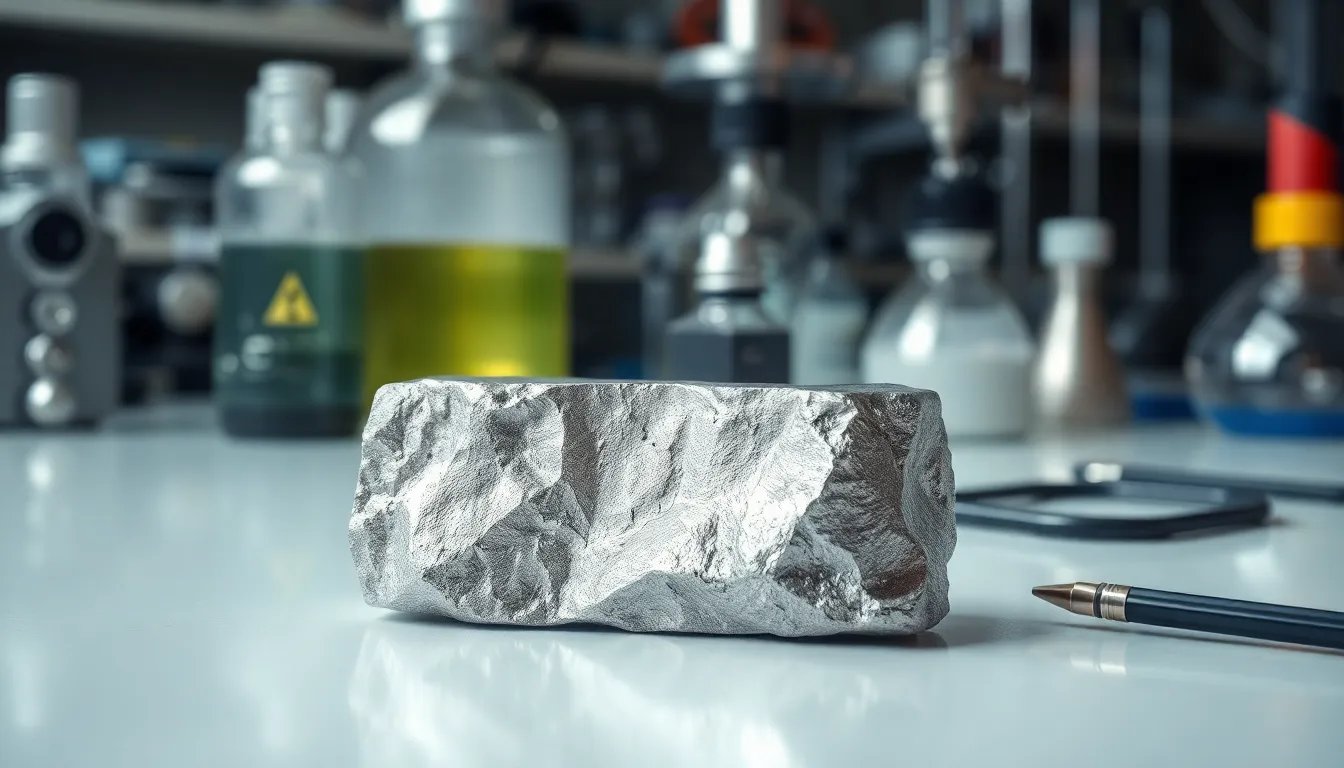When it comes to heavy metals, tungsten takes the crown—or should we say the weight belt? Known for its incredible density and strength, tungsten is the superhero of the periodic table. But how much does this mighty metal actually weigh? If you’ve ever wondered why it’s the go-to choice for everything from high-performance sports equipment to cutting-edge electronics, you’re in for a treat.
Table of Contents
ToggleOverview of Tungsten
Tungsten ranks as the heaviest metal, with an atomic number of 74 and a density of 19.25 grams per cubic centimeter. This remarkable density makes tungsten about 1.7 times denser than lead, contributing to its reputation in manufacturing robust components. Applications in industrial machinery and aerospace often rely on tungsten’s heavy characteristics to enhance performance and durability.
Many industries value tungsten for its strength as well. It possesses the highest melting point of all metals, reaching 3,422 degrees Celsius. Such properties lend themselves to high-temperature applications, including lightbulb filaments and rocket engine nozzles.
Tungsten’s unique qualities extend to its chemical stability. It resists corrosion and oxidation, making it ideal for environments that require longevity and resilience. This feature helps to preserve its weight and structural integrity over time.
Weighted considerations showcase tungsten’s significance. A relatively small volume of tungsten can achieve the same weight as a large volume of lighter metals. This capacity is beneficial in applications where space is limited, such as in military ordnance and precision instruments.
Manufacturers frequently use tungsten in jewelry as well, owing to its scratch-resistant surface and appealing aesthetics. The density of tungsten allows for the creation of finely crafted pieces that maintain their luster.
Understanding tungsten’s weight and properties highlights its widespread utility across various sectors, from science to everyday objects. This knowledge illustrates why tungsten continues to be an essential material in modern applications.
Understanding Tungsten’s Density

Tungsten’s density stems from its atomic structure and heavy elements. The atomic number of tungsten is 74, and it consists of 74 protons and typically 110 neutrons. This combination contributes to its high density of 19.25 grams per cubic centimeter. Tungsten’s tightly packed atoms create a strong metallic lattice, maximizing its weight for even small volumes.
Atomic Structure of Tungsten
The arrangement of tungsten’s electrons contributes to its unique properties. With an electron configuration of [Xe] 4f14 5d4 6s2, tungsten has a complex electron shell structure. Electrons occupy the 5d orbital, making tungsten highly conductive and chemically stable. High atomic mass and dense packing result in exceptional strength, which makes tungsten ideal for demanding applications in electronics and aerospace.
Comparison with Other Metals
When comparing tungsten with other metals, significant differences in density stand out. For instance, lead has a density of 11.34 grams per cubic centimeter, making tungsten about 1.7 times denser. Gold, another heavy metal, has a density of 19.32 grams per cubic centimeter, comparable to tungsten. However, tungsten excels in strength, making it a preferred choice for applications requiring durability and resilience over mere weight. In essence, tungsten’s weight, combined with its robust properties, demonstrates its value across various industries.
Practical Applications of Tungsten
Tungsten’s unique properties allow for numerous practical applications across various industries. Its density and strength make it invaluable.
Uses in Industry
Tungsten frequently finds use in manufacturing high-performance components. Industries like aerospace rely on tungsten for rocket engine nozzles and turbine blades, thanks to its ability to withstand extreme temperatures. Electronics benefit from tungsten’s high conductivity, often utilizing it in filaments and supercapacitors. Heavy equipment manufacturers turn to tungsten for drill bits and cutting tools, ensuring durability and precision. Tungsten also serves as a key material in military applications, enhancing munitions and armor-piercing projectiles.
Impact on Weight Considerations
Weight plays a crucial role in the design of various products. Tungsten’s exceptional density allows engineers to optimize space without sacrificing strength. Smaller components made from tungsten achieve the desired weight without the bulk associated with lighter materials. This characteristic proves beneficial in fields where space is limited, such as in aerospace and precision instruments. Designers often prefer tungsten for its ability to maintain structural integrity while minimizing weight, crucial for performance in demanding environments. Comprehensive understanding of tungsten’s weight properties fosters innovative solutions across multiple sectors.
Weight Calculations for Tungsten
Tungsten exhibits notable weight characteristics, influenced by its density and form. Understanding these weight calculations aids various industries in applying tungsten effectively.
Measuring Tungsten in Various Forms
Tungsten is available in multiple forms, including bars, sheets, and powders. Each form presents unique weight considerations. For instance, a tungsten bar measuring 10 cm by 10 cm by 10 cm weighs approximately 1,925 grams. In contrast, tungsten powder’s weight varies significantly due to differences in particle size and compaction. When processed, the weight of tungsten components can be tailored to meet specific application needs.
Weight Variability Factors
Several factors influence tungsten’s weight in practical applications. Purity plays a key role; higher purity tungsten typically results in more consistent weight. The presence of alloying elements also impacts overall weight, as added metals can create variations in density. Furthermore, fabrication methods affect the final weight of the product, leading to discrepancies in measurements. Engineers must consider these factors when designing components for aerospace, medical, or industrial use, ensuring precise calculations align with performance requirements.
Tungsten’s remarkable weight and density make it a standout material in various industries. Its unique properties not only enhance performance but also allow for innovative designs that prioritize strength without adding bulk. As engineers and designers continue to leverage tungsten’s advantages, its role in high-performance applications will only grow. Understanding tungsten’s weight characteristics is crucial for optimizing its use in everything from aerospace to electronics. This metal’s combination of strength and durability ensures it remains a vital component in modern manufacturing and design.



